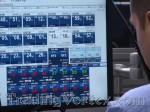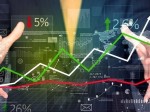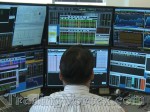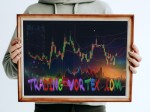Table Of Contents:
- Introduction:
- Key Economic Indicators in Forex Trading:
- Additional Economic Indicators to Watch:
- How to Analyze Economic Indicators for Forex Trading:
- Practical Strategies for Trading Based on Economic Indicators:
- Risks and Challenges in Using Economic Indicators:
- Wrapping Up: Mastering Forex with Economic Indicators!
- Frequently Asked Questions (FAQs)
Introduction:
Importance of Economic Indicators in Forex Trading:
Alright, folks, let’s dive straight into why we’re all here – economic indicators and why they’re the lifeblood of forex trading. Imagine trying to sail across the Atlantic without a compass or GPS. That’s what trading forex without paying attention to economic indicators feels like. These indicators are the bread and butter of informed trading decisions, and if you master them, you’re already halfway to becoming a forex wizard.
Understanding the Role of Economic Data in Currency Markets:
Now, let’s talk about how this economic data plays out in the wild world of currency markets. Picture this: you’re sitting in your home office, sipping your morning coffee, and you see the latest GDP report flashing on your screen. The number is better than expected. Right away, you know this is likely going to push the country’s currency higher. Why? Because strong GDP growth signals a robust economy, attracting more investment and boosting currency value.
But it’s not always straightforward. Economic indicators often interact in complex ways. Take inflation, for example. Moderate inflation is usually a sign of a growing economy, but if it’s too high, it can spell trouble. Central banks might hike interest rates to keep inflation in check, which could strengthen the currency in the short term but might hurt economic growth down the line. As traders, we need to keep our fingers on the pulse of these developments and understand their nuanced impacts.
Speaking of central banks, their announcements are like blockbuster movie releases in the forex world. When the Federal Reserve or the European Central Bank makes a statement, markets listen. Interest rate decisions, monetary policy updates, and economic outlooks can cause currencies to swing wildly. Remember that time when the Fed hinted at raising rates? The dollar shot up faster than a SpaceX rocket. Those moments are gold mines for traders who are prepared.
So, why does all this matter? Because in forex trading, knowledge truly is power. The more you understand these economic indicators and how they influence currency movements, the better equipped you’ll be to make smart trades. And trust me, there’s no better feeling than riding a well-timed trade all the way to profit city.
To wrap it up, think of economic indicators as the secret ingredients in your forex trading recipe. Master them, and you’ll be able to whip up profitable trades with confidence. Ignore them, and you’ll be left wondering why your trades always seem to go sideways. So, grab your charts, fire up those economic calendars, and let’s make some money, shall we?
Key Economic Indicators in Forex Trading:
Alright, let’s roll up our sleeves and get into the nitty-gritty of the key economic indicators that every forex trader should have on their radar. These indicators are like the secret sauce that can make or break your trading strategy. So, grab your coffee, get comfy, and let’s dive in.
Gross Domestic Product (GDP):
How GDP Impacts Currency Values:
But here’s a little story from my trading days. I remember one quarter when the US GDP growth exceeded all expectations. The dollar shot up, and I made a tidy profit. However, I also recall a time when the UK’s GDP numbers came in strong, but political uncertainties muddied the waters, and the pound didn’t react as expected. So, while GDP is crucial, always consider the broader context.
Interpreting GDP Reports for Forex Trading:
One pro tip: compare the actual GDP figure with the forecasted number. If the GDP exceeds expectations, it’s usually a bullish sign for the currency. If it falls short, brace yourself for a potential drop. Keep an eye on revisions of previous GDP numbers too; they can sway the market.
Inflation Rates:
The Relationship Between Inflation and Currency Strength:
I once got caught in a trade where the inflation rate unexpectedly spiked. The central bank hiked interest rates, and the currency rallied hard. Lesson learned: always keep an eye on those inflation figures!
Using CPI and PPI Data in Forex Analysis:
Two main indicators to watch here are the Consumer Price Index (CPI) and the Producer Price Index (PPI).
- CPI measures the average change in prices from the consumer’s perspective – think of it as your everyday shopping list.
- PPI, on the other hand, looks at price changes from the producers’ side of things – like the cost of raw materials.
In your analysis, if CPI is rising, it could mean higher interest rates are on the horizon, which typically strengthens the currency. PPI can give you an early signal about future CPI trends. Together, they provide a comprehensive picture of inflation pressures.
Employment Data:
Non-Farm Payrolls and Its Effect on the Forex Market:
I remember my first NFP day trade. I was glued to the screen, heart pounding, as the numbers came in better than expected. The dollar surged, and I managed to close a profitable trade. It’s thrilling, but also nerve-wracking, so always have a solid plan in place.
Analyzing Unemployment Rates for Trading Opportunities:
Central Bank Announcements:
The Influence of Interest Rate Decisions on Forex:
I recall a time when the European Central Bank (ECB) surprised everyone with an unexpected rate cut. The euro plummeted, and I managed to jump in at the right moment for a nice gain. But these moves can be unpredictable, so always stay informed and ready to act.
Understanding Central Bank Minutes and Statements:
One of my favorite strategies is to read these documents thoroughly. They’re full of nuggets that can guide your trading decisions. Sometimes, a single word change from the previous statement can shift market sentiment.
There you have it, the key economic indicators that can help you navigate the forex market like a pro. Keep these tools sharp, stay alert, and you’ll be better equipped to seize those trading opportunities when they arise. Happy trading!
Additional Economic Indicators to Watch:
Alright, friends, let’s take our trading knowledge up a notch by diving into some additional economic indicators that can make a big difference in your forex game. These indicators might not grab the headlines as much as GDP or interest rate decisions, but trust me, they’re like the secret spices that can add flavor to your trading strategy.
Retail Sales Data:
Predicting Market Movements with Retail Sales Reports:
I remember once placing a trade just before a major retail sales report was released. The report showed a significant increase in spending during the holiday season, way above expectations. The currency shot up, and I rode that wave to a nice profit. The key here is timing and understanding seasonal trends – like holiday shopping spikes or back-to-school sales.
When interpreting retail sales data, look for trends. Are sales consistently rising, or are there erratic swings? Consistency usually points to a stable economic environment, which is good for the currency. Sudden drops might signal underlying problems, leading to a weaker currency.
Trade Balance:
How Trade Deficits and Surpluses Affect Currency Prices?
I’ll never forget the time I closely watched Japan’s trade balance figures. Japan is a major exporter, and when they posted an unexpectedly high trade surplus, the yen surged. Those who were prepared made a killing.
Analyzing the trade balance involves understanding the country’s major trading partners and the types of goods it exports. For instance, if a country exports a lot of commodities and there’s a global commodity price boom, its trade balance might improve, boosting its currency.
Consumer Confidence Index:
Utilizing Consumer Sentiment in Forex Strategies:
I had an interesting experience trading the Australian dollar around the time their consumer confidence index was released. The index showed a sharp drop due to political uncertainties, and the Aussie dollar took a hit. It was a good reminder that sentiment plays a huge role in currency movements.
Using CCI in your forex strategy means keeping an eye on trends and big shifts. A sudden drop in consumer confidence can indicate potential economic trouble ahead, leading to a weaker currency. Conversely, a rising CCI can signal better times ahead, boosting the currency.
So there you have it – retail sales data, trade balance, and the consumer confidence index. These indicators might not be as flashy as GDP or interest rate announcements, but they’re incredibly valuable for understanding the underlying currents in the forex market. Keep an eye on them, and you’ll add another layer of depth to your trading strategy. Remember, the more tools you have in your trading toolbox, the better prepared you’ll be to navigate the ever-changing tides of the forex market. Happy trading!
How to Analyze Economic Indicators for Forex Trading:
Alright, let’s get into the meat of how to actually use these economic indicators to inform your forex trading. It’s one thing to know what GDP, inflation, and employment data are, but it’s another to effectively incorporate this data into your trading strategy. I’m here to share some insights from my own trading journey that will hopefully make your path a bit smoother. Grab a seat, maybe a drink, and let’s get into it.
Fundamental Analysis vs Technical Analysis:
The Fundamental Side of Things:
I remember back in the day, I was primarily a technical trader. I loved my charts and indicators. But I started dabbling in fundamentals when I noticed my charts couldn’t explain sudden market moves. Like that time when an unexpected GDP report caused a massive spike. It was a wake-up call that blending both approaches could be powerful.
The Technical Angle:
The beauty of technical analysis is its objectivity. The charts don’t lie; they reflect what’s happening in the market right now. But remember, those charts can’t always tell you why something is happening. That’s where the fundamentals come in.
Combining Economic Data with Technical Indicators:
Here’s where the magic happens: combining fundamental and technical analysis. This approach gives you a more well-rounded view of the market, like having both a map and a compass on a hike.
For instance, let’s say you’re looking at the euro. Technically, the euro might be showing a bullish pattern on the charts. But then you see a report suggesting the European Central Bank is considering cutting interest rates. That fundamental data might make you hesitate or adjust your trade, even if the technicals look good.
I like to start my day with a quick scan of the economic calendar to see what reports are coming out. Then, I check my charts to see what the technical picture looks like. This way, I’m prepared for any potential volatility and have a better idea of how to position myself.
Tools and Resources for Economic Data Analysis:
Having the right tools is crucial. Here are some of my go-to resources:
- Economic Calendars: Websites like Forex Factory and Investing.com offer detailed economic calendars. They highlight upcoming reports, their expected impact, and previous data for comparison. It’s like having a weather forecast for the markets.
- News Feeds: Platforms like Bloomberg, Reuters, and even Twitter can provide real-time updates. Being quick on the draw with fresh information can make a big difference. I once caught a market-moving announcement on Twitter before it hit the mainstream news and managed to capitalize on the ensuing movement. Here you will find the ultimate Source for Forex News.
- Analytical Platforms: Tools like MetaTrader, TradingView, and Thinkorswim offer robust technical analysis features. They allow you to overlay fundamental data on your charts, helping you see the bigger picture. I love using TradingView for its community-driven ideas and chart sharing—great for getting different perspectives.
- Educational Resources: TradingVortex.com website are fantastic for learning the ropes. They offer courses on both fundamental and technical analysis, perfect for both newbies and seasoned traders looking to brush up on their skills.
Incorporating these tools into your daily routine can make analyzing economic indicators a lot more manageable and effective.
So, there you have it – how to analyze economic indicators for forex trading. By blending fundamental and technical analysis, and using the right tools, you can navigate the forex market with greater confidence. Remember, trading is as much an art as it is a science. Keep learning, stay curious, and never stop honing your craft. Happy trading!
Practical Strategies for Trading Based on Economic Indicators:
Alright, folks, let’s roll up our sleeves and get into some practical strategies for trading based on economic indicators. This is where the rubber meets the road. Understanding the theory behind economic indicators is one thing, but knowing how to use that information to make profitable trades is where it gets exciting. I’m going to share some tried-and-true strategies, along with a few personal anecdotes to bring it all to life.
Pre-Announcement Positioning – Risks and Rewards:
The Anticipation Game:
Trading around economic announcements is like being on a roller coaster. The adrenaline rush can be exhilarating, but it’s not without risks. Pre-announcement positioning involves placing your trades before key economic data is released, hoping to capitalize on the market’s reaction.
Imagine it’s the night before the Non-Farm Payrolls (NFP) report. The market is buzzing with speculation. Some traders prefer to enter positions ahead of the announcement, betting on what the data will reveal. This strategy can be incredibly rewarding if you’re on the right side of the news. I once positioned myself long on the USD before an anticipated strong NFP report. When the numbers blew past expectations, the dollar surged, and I had one of my most profitable days.
Balancing the Risks:
However, pre-announcement positioning is not for the faint-hearted. The market can be unpredictable, and even if you’re right about the data direction, the market’s initial reaction can sometimes defy logic. One time, I anticipated a strong GDP report for the Eurozone and went long on the euro. The GDP was indeed strong, but political unrest caused the euro to dip instead. Talk about a curveball!
To mitigate these risks, use protective stop-loss orders and manage your position size carefully. It’s also wise to diversify your trades to avoid putting all your eggs in one basket.
Post-Announcement Trading Strategies:
Riding the Wave:
Once the economic data is out, the market’s reaction can create excellent trading opportunities. This is where post-announcement trading strategies come into play. The key is to wait for the initial volatility to settle and then ride the emerging trend.
For instance, after an unexpected interest rate hike by the Federal Reserve, the dollar might initially spike and then pull back slightly. This pullback can be a great entry point to go long if you believe the dollar will continue to strengthen. I’ve often waited for the dust to settle after such announcements and then jumped in to catch the sustained move.
Quick Reaction Trades:
Sometimes, quick reaction trades can be profitable. For example, if the CPI data shows a sudden spike in inflation, you might see an immediate reaction in the currency markets. Being quick on the trigger can allow you to capture these rapid moves. However, this requires a solid internet connection, a reliable broker, and the ability to stay calm under pressure.
Case Studies – Successful Trades Using Economic Data:
The Brexit Vote:
The COVID-19 Pandemic:
The US-China Trade War:
In conclusion, trading based on economic indicators requires a blend of preparation, quick reaction, and, sometimes, a bit of luck. By positioning yourself wisely before announcements, reacting strategically post-release, and learning from past case studies, you can significantly enhance your trading performance. Stay informed, stay flexible, and most importantly, stay disciplined. Happy trading!
Risks and Challenges in Using Economic Indicators:
Alright, let’s get real for a moment and talk about the risks and challenges that come with using economic indicators in forex trading. It’s not all sunshine and profits; there are pitfalls to watch out for. As someone who’s been in the trenches, I can tell you that navigating these waters requires a blend of caution, strategy, and a bit of wisdom from hard-earned experience.
False Signals and Market Noise:
Separating the Wheat from the Chaff:
One of the biggest challenges is dealing with false signals and market noise. Not every piece of economic data will lead to a clear market movement. Sometimes, the market reacts in ways that seem irrational or counterintuitive. For instance, I remember once when a positive GDP report came out, but instead of strengthening the currency, the market dipped. Turns out, traders were already expecting good news and had “bought the rumor, sold the fact.”
Market noise can also come from a barrage of data releases that contradict each other. Imagine waking up to a strong employment report, but an hour later, a disappointing manufacturing index is released. The market can swing wildly, leaving you scratching your head.
Managing Volatility Around Economic Releases:
The Whipsaw Effect:
One time, I was trading during an ECB announcement. The market initially spiked in one direction, stopped me out, and then reversed to move exactly as I had predicted. Frustrating, to say the least. This taught me the importance of using wider stop-losses or trading smaller positions during high-volatility periods to manage risk better.
Strategies for Managing Volatility:
- Use Wider Stop-Losses: This can help avoid getting stopped out by the initial volatility spike.
- Trade Smaller Positions: Reduces the potential loss if the market moves against you.
- Wait for the Dust to Settle: Sometimes, it’s better to let the market absorb the news and establish a direction before jumping in.
The Importance of Staying Informed and Updated:
The Dynamic Nature of Forex Markets:
The forex market is incredibly dynamic. What was true yesterday might not be true today. Economic conditions change, and so do market sentiments. Staying informed and updated is crucial for making sound trading decisions. Relying on outdated information can lead to poor trades and missed opportunities.
Tools for Staying Updated:
- Economic Calendars: Regularly check the Economic Calendar for upcoming releases.
- News Feeds: Use real-time news sources like Bloomberg, Reuters, and even Twitter for the latest updates. You can get an overview of everything that's happening in the forex market using the Ultimate Source for Forex News.
- Analysis Reports: Read daily and weekly analysis reports from reputable financial institutions to get professional insights. Here you will find the ultimate webpage that scours the entire web for the most relevant and useful forex analysis, reviews, signals and forecasts.
Navigating the risks and challenges of using economic indicators in forex trading requires a blend of skill, knowledge, and experience. False signals, market noise, and volatility are part of the game, but with the right strategies and staying informed, you can turn these challenges into opportunities. Remember, it’s a marathon, not a sprint. Stay patient, stay informed, and keep honing your skills. Happy trading!
Wrapping Up: Mastering Forex with Economic Indicators!
Alright, friends, we’ve covered a lot of ground in our exploration of economic indicators and their impact on forex trading. It’s been quite the journey, hasn’t it? Let’s take a moment to recap and share some final tips to help you incorporate all this knowledge into your trading plans effectively.
Recap of the Importance of Economic Indicators in Forex Trading:
Economic indicators are like the heartbeat of the forex market. They provide critical insights into a country’s economic health and help us anticipate how currency values might move. From GDP and inflation rates to employment data and central bank announcements, these metrics offer a window into the economic landscape, guiding our trading decisions.
Remember, using economic indicators is not just about understanding the data but also about interpreting its implications in the context of current market conditions. It’s about connecting the dots and seeing the bigger picture. I can’t emphasize enough how invaluable this skill has been in my trading career. There have been countless times when a keen eye on the indicators has given me an edge, turning potential risks into profitable opportunities.
Final Tips for Incorporating Economic Data into Trading Plans:
Stay Disciplined and Patient:
First and foremost, stay disciplined and patient. Economic indicators can cause significant market movements, but not every release will present a trading opportunity. Sometimes, the best trade is no trade at all. Patience allows you to wait for clear signals and avoid the pitfalls of impulsive decisions.
Keep Learning and Adapting:
The forex market is ever-evolving. What worked last year might not work today. Keep learning, stay curious, and be ready to adapt your strategies. Dive into educational resources, follow market news, and never stop honing your analytical skills. I’ve found that the more I learn, the more adaptable and resilient my trading becomes.
Use a Blend of Analysis:
Don’t rely solely on one type of analysis. Combine fundamental and technical analysis for a more comprehensive view. While economic indicators provide the fundamentals, technical analysis helps you time your trades better. This blend has been my go-to approach and has saved me from many potential missteps.
Manage Your Risks:
Always manage your risks. Use stop-loss orders, diversify your trades, and never risk more than you can afford to lose. It’s easy to get swept up in the excitement of trading, but risk management is your safety net. Trust me, I’ve had my fair share of lessons learned the hard way.
Stay Informed:
Finally, stay informed. Use reliable sources for economic data, keep an eye on the economic calendar, and stay updated with the latest market news. The more informed you are, the better equipped you’ll be to navigate the market’s ups and downs.
In conclusion, mastering the use of economic indicators in forex trading is a journey. It’s about blending knowledge with experience, staying disciplined, and continually learning. By incorporating these insights into your trading plans, you’ll be well on your way to making more informed and strategic decisions.
Happy trading, everyone! And remember, the market is full of opportunities. Stay sharp, stay patient, and enjoy the ride.
Frequently Asked Questions (FAQs)
Alright, folks, let’s dive into some of the most common questions I get about using economic indicators in forex trading. I’m sure some of these will sound familiar, especially if you’re just starting out or even if you’ve been in the game for a while. Let’s tackle these head-on with some practical, down-to-earth answers.
Economic indicators are statistical metrics used to gauge the health and direction of an economy. They include data points like GDP, inflation rates, employment figures, and retail sales. In forex trading, these indicators are crucial because they influence currency values. For example, strong GDP growth often leads to a stronger currency, while high inflation might weaken it.
Great question! Not all indicators are created equal. The ones you prioritize should depend on the currency pairs you’re trading. For example, if you’re trading the USD/JPY, you’ll want to pay close attention to US economic data like the Non-Farm Payrolls (NFP) report, as well as Japanese economic indicators such as the Tankan survey. Generally, major indicators like GDP, inflation, employment data, and central bank announcements are universally important.
Trading based on economic indicators can be risky due to market volatility and the potential for false signals. Sometimes, the market’s reaction to data can be unpredictable. For instance, a strong employment report might not always lead to a stronger currency if other factors are at play. Managing these risks involves using stop-loss orders, trading smaller positions around major announcements, and staying flexible with your strategies.
While economic indicators are a powerful tool, relying solely on them isn’t advisable. It’s essential to combine fundamental analysis with technical analysis. Economic indicators provide the “why” behind market movements, but technical analysis helps you determine the “when.” This combined approach gives you a more comprehensive view and can improve your trading decisions.
Unexpected data releases can create significant market volatility. The best approach is to stay calm and avoid making impulsive decisions. Wait for the initial market reaction to settle before making a move. Use this time to reassess your position and consider the broader market context. One time, I jumped the gun on a surprising inflation report and ended up getting whipsawed. Lesson learned: patience pays off.
Several tools can help you analyze economic indicators effectively:
- Economic Calendars: Track upcoming data releases and their expected impacts.
- Charting Platforms: Tools like MetaTrader, TradingView, and Thinkorswim offer robust features for technical analysis, allowing you to overlay economic data on your charts.
- News Feeds: Real-time news services like Bloomberg and Reuters provide immediate updates and professional analysis.
- Educational Resources: Websites like BabyPips offer comprehensive courses on both fundamental and technical analysis.
Central bank announcements, particularly regarding interest rates, can have a massive impact on forex markets. When a central bank hints at raising or lowering interest rates, it can lead to significant currency movements. For instance, if the Federal Reserve signals an upcoming rate hike, the US dollar typically strengthens. Staying attuned to these announcements and understanding their implications is crucial for successful trading.
I hope these FAQs help clear up some of your burning questions about using economic indicators in forex trading. Remember, the key is to stay informed, be patient, and continually adapt your strategies. Trading is a journey, and with the right tools and knowledge, you’ll be well-equipped to navigate the markets. Happy trading, and feel free to reach out if you have more questions!






































 TradingVortex.com® 2019 © All Rights Reserved.
TradingVortex.com® 2019 © All Rights Reserved.